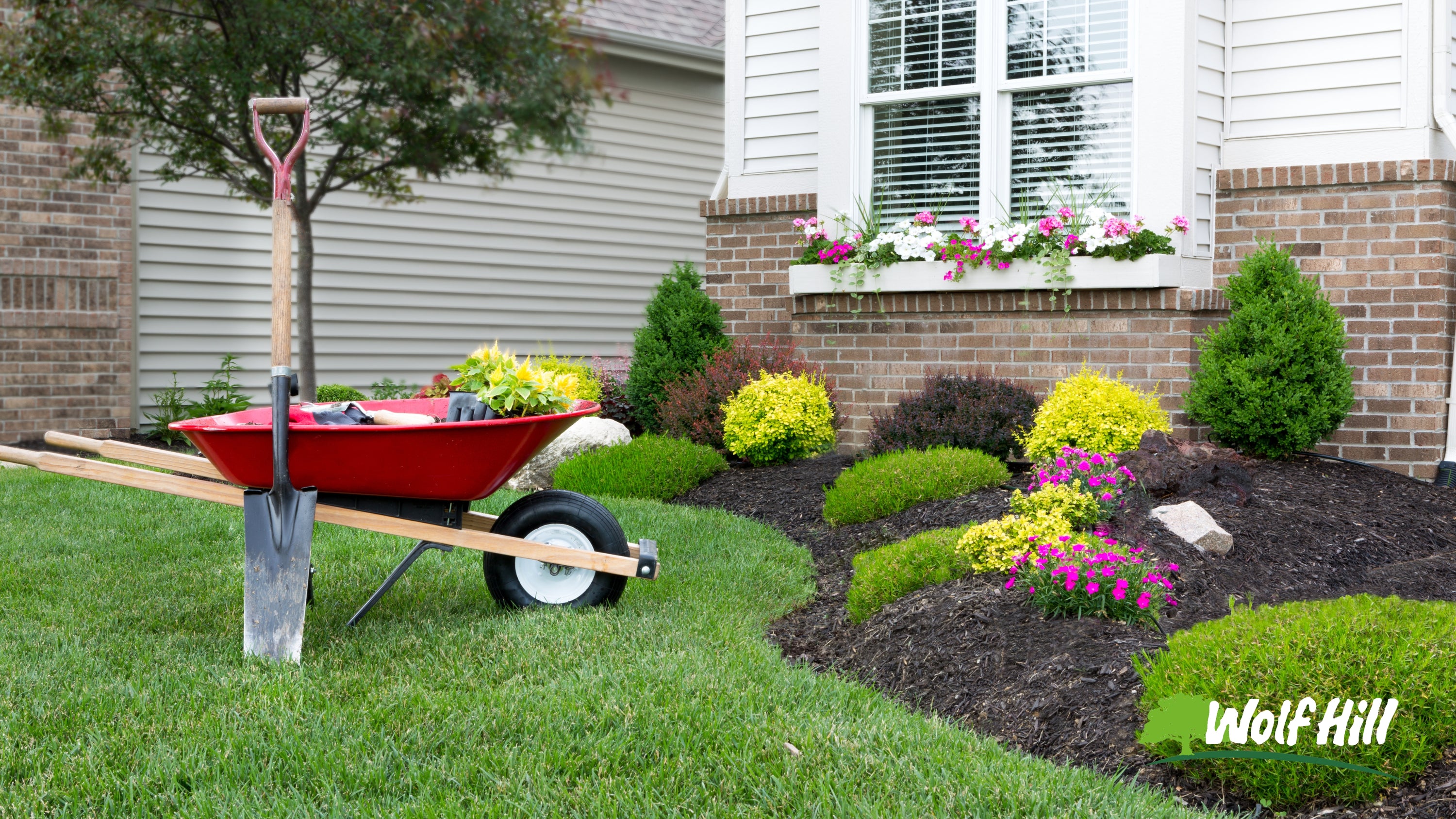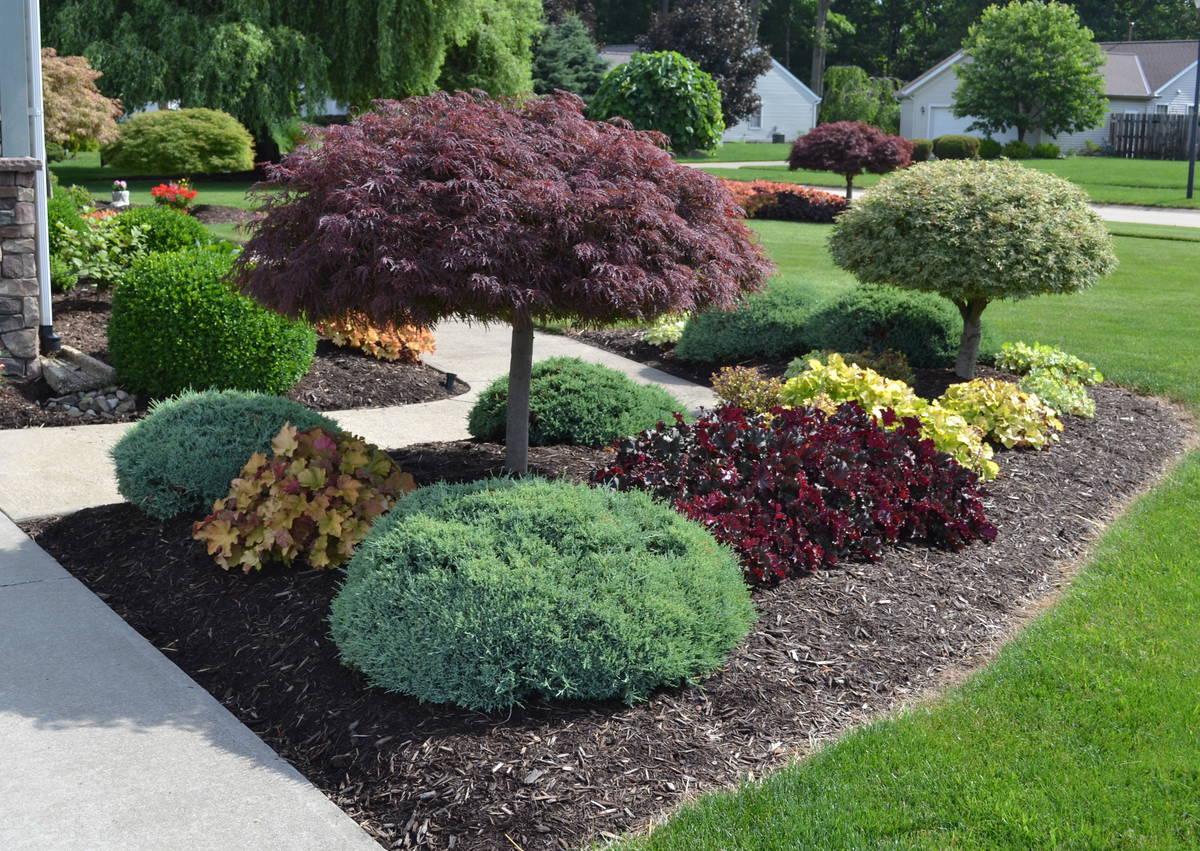How Retaining Wall Installation Can Boost Your Property Worth
Wiki Article
Discovering Various Kinds Of Landscaping to Enhance Your Outdoor Setting
Landscape design plays an essential duty in defining outdoor rooms. Numerous designs, from standard gardens to modern-day minimal layouts, supply unique benefits for enhancing looks and feature. Including aspects like xeriscaping and indigenous plants can contribute to environmental balance. Understanding the interplay of hardscape and softscape is essential for developing inviting atmospheres. The options offered can be overwhelming, motivating one to reflect on which style best straightens with their vision for an outdoor haven.Typical Yard Landscaping

While numerous contemporary gardens embrace minimalism and indigenous plantings, conventional yard landscape design remains a cherished technique that emphasizes balance, framework, and decorative features. This design typically integrates official geometric formats, where bushes, flowerbeds, and pathways are set up with precision. Central prime focus, such as sculptures or water fountains, attract the eye and supply a feeling of harmony.Traditional landscape design often consists of a selection of plant types, showcasing seasonal flowers and evergreen aspects. Timeless hedges, perennials, and annuals create vibrant colors and textures throughout the year. Furthermore, pergolas, trellises, and arcs add upright interest and work as support for climbing up plants, improving the overall aesthetic.The usage of natural materials, such as rock and timber, additional improves the traditional landscape, adding to an ageless top quality. Inevitably, this style welcomes leisure and enjoyment, making it a precious choice for those seeking a picturesque outside environment.
Modern Minimalist Landscape Design
Modern minimal landscaping emphasizes simplicity and performance, characterized by tidy lines and open areas. Key features consist of a restricted plant combination and thoughtful hardscape layout that focuses on usability and visual charm. Reliable plant selection approaches further boost the minimalist strategy, developing peaceful exterior atmospheres that urge leisure and reflection.Secret Characteristics of Minimalism
An expanding trend in landscape design is the accept of minimalism, identified by simplicity and performance. Minimalist landscaping concentrates on tidy lines, open rooms, and a restricted color scheme, promoting a sense of harmony. Aspects are carefully curated to stay clear of mess, allowing each part to stick out. Making use of all-natural materials, such as rock and timber, boosts the organic feeling while preserving a visual balance. Additionally, minimal layouts commonly integrate geometric forms, which can produce aesthetic passion without frustrating the senses. Water attributes might be included, acting as focal points that improve peacefulness. Generally, minimalism in landscape design emphasizes the beauty of restraint, permitting nature's intrinsic qualities to radiate through in an unified outdoor setting.Plant Option Methods
Reliable plant selection is crucial for accomplishing the preferred aesthetic in modern minimal landscaping. The focus must be on simpleness, making use of a limited palette of plants that enhance each other and the surrounding atmosphere. Indigenous plants are commonly perfect, as they call for less maintenance and water, advertising sustainability. Picking varieties with varying elevations and structures can add visual interest without frustrating the room. Grouping plants in collections rather than scattering them enhances communication and enhances the minimalist motif. Evergreen varieties can offer year-round framework, while seasonal blooms present subtle color changes. Inevitably, the goal is to create a serene outdoor space that personifies tranquility and consistency through thoughtful plant options.Hardscape Style Concepts
Essential components in hardscape design significantly add to the total visual appeals and performance of minimalist landscape design. This design strategy stresses tidy lines and downplayed materials, producing an uncluttered visual experience. Secret elements include paths, patio areas, and preserving walls, which not just specify spaces yet likewise boost accessibility and usability. The usage of products such as concrete, rock, and timber prevails, mirroring an all-natural yet modern-day visual. Incorporating in proportion layouts and geometric shapes additionally strengthens the minimalist philosophy, allowing for a harmonious mix with bordering greenery. Furthermore, proper drain and erosion control are crucial considerations, making certain durability and sustainability. Eventually, effective hardscape style offers as a structure that enhances softscape aspects while keeping equilibrium and simplicity in outdoor atmospheres.
Cottage-Style Landscape design
Cottage-style landscape design offers a delightful approach to developing welcoming outside spaces. By including captivating plant combinations, this style fosters a feeling of warmth and fancifulness. The focus on relaxing, well-defined locations urges leisure and satisfaction of nature.Charming Plant Combinations
Several property owners seek to develop a picturesque outdoor room, accomplishing the beauty of cottage-style landscape design typically pivots on thoughtful plant mixes. Lively blossoms, rich vegetation, and fragrant herbs can be skillfully paired to evoke a feeling of whimsy and fond memories. Incorporating lavender, sissies, and foxgloves creates a vivid tapestry that attracts pollinators while providing a delightful scent. Incorporating decorative yards like miscanthus can add texture and movement, enhancing the softer flowers. Furthermore, mixing perennial and yearly plants warranties continuous shade throughout the periods. Using mountain climbers, such as clematis or honeysuckle, can enhance upright interest. On the whole, these combinations not only beautify the landscape but likewise cultivate a captivating and welcoming ambience.
Cozy Outdoor Rooms
Developing relaxing outside spaces requires a cautious mix of convenience and appeal, complementing the vivid plant mixes discovered in cottage-style landscape design - Landscape Lighting Installer. These areas usually include welcoming seating arrangements, such as weather-beaten wood benches or cushioned chairs bordered by lavish greenery. Soft illumination, like fairy lights or lights, adds heat, changing the area into a peaceful resort. Including elements such as trellises decorated with climbing up roses or great smelling natural herbs boosts sensory experiences. In addition, paths made from rustic stones invite expedition and connection with nature. Attractive touches like birdbaths or whimsical yard art add to a feeling of whimsy. Inevitably, the objective is to create a captivating atmosphere that urges relaxation and pleasure of the elegance surrounding these cozy outside havensXeriscaping for Water Conservation
Exactly how can neighborhoods balance visual landscape design with the pressing demand for water preservation? Xeriscaping emerges as a sensible service, promoting sustainable methods that minimize water usage while improving exterior appeal. This landscape design technique concentrates on making use of drought-resistant plants indigenous to the area, which require significantly much less water than standard gardens. By including compost and efficient watering systems, xeriscaping decreases evaporation and runoff, further conserving valuable water resources.Communities can develop aesthetically enticing landscapes via careful planning, selecting a diverse selection of textures and shades that thrive in dry problems. Additionally, xeriscaping encourages the use of decorative rocks and ornamental crushed rock, using useful and appealing choices to lawn lawns. As areas welcome this environmentally friendly strategy, they not only lower their water intake but additionally promote biodiversity and resilience in their local communities. Eventually, xeriscaping functions as a demonstration of the harmony in between aesthetic appeal and environmental responsibility.Hardscape Style Elements
Hardscape style components play a necessary duty in boosting outside rooms by supplying structure and performance. These non-plant attributes, such as patio areas, pathways, walls, and decks, produce aesthetic passion while serving practical purposes. Using products like brick, concrete, and stone, hardscaping adds to the general visual appeal and toughness of a landscape.Incorporating hardscape aspects can specify areas within a yard, directing activity and encouraging social interaction. As an example, a well-placed path can connect different sections of the yard, while retaining wall surfaces can handle elevation changes and protect against erosion.Furthermore, hardscape layout can boost access and safety, offering secure surface areas for lounging or strolling. Efficient integration of hardscape components enhances soft landscaping, guaranteeing a well balanced exterior setting. Eventually, thoughtful hardscape style enhances not only the elegance of outdoor rooms but also their use, making them extra inviting and practical for homeowners and visitors alike.Exterior Living Rooms
While outdoor living rooms supply a seamless blend of convenience and Go Here nature, they offer as essential extensions of a home, boosting way of living and recreation. These areas can consist of patio areas, decks, or outside cooking areas, designed to cultivate leisure and home entertainment. Retaining Wall Installation. By incorporating useful furniture and trendy decor, home owners create inviting ambiences for celebrations or silent evenings.The integration of shade structures, such as awnings or pergolas, safeguards versus the aspects while keeping an open feel. Fire pits and outdoor heating systems prolong use into cooler months, offering heat and ambiance. In addition, including illumination features boosts the area's usability after sunset, creating a magical evening atmosphere.Landscaping components, such as borders and pathways, further define these areas, guiding activity and adding visual appeal. Eventually, outdoor home change backyards right into versatile retreats, promoting a learn the facts here now lifestyle that welcomes both nature and comfortIndigenous Plant Landscaping
Indigenous plant landscaping highlights making use of aboriginal plants to create harmonious and lasting outdoor atmospheres. This method not just improves biodiversity however likewise saves water and minimizes the demand for chemical plant foods and chemicals. By selecting plants that are belonging to a details area, homeowners can assure that their landscapes are well-adapted to neighborhood dirt and climate conditions, resulting in lower upkeep requirements.Additionally, native plants offer crucial habitats for local wild animals, including birds, butterflies, and bees, promoting eco-friendly health. Landscape designs that include these plants commonly include naturalistic formats that resemble local environments, fostering a local color and link to the environment.Furthermore, native plant landscape design can add to dirt stability and disintegration control, making it an eco liable option. In general, this technique not just beautifies outdoor areas but additionally supports the local environment, creating a sustainable equilibrium between human activity and nature.
Often Asked Questions
Exactly How Can I Select the Right Landscape Design Design for My Home?
Choosing the ideal landscaping design for a home entails reviewing the residential property's design, environment, and individual choices. Outdoor Lighting Installer. Looking into various designs and getting in touch with specialists can offer assistance to produce a harmonious exterior space customized to private requirementsWhat Is the Typical Expense of Specialist Landscape Design Services?
The average cost of specialist landscaping services generally varies from $1,000 to $5,000, depending on task complexity, size, and location. House owners should think about acquiring multiple quotes to assure they obtain reasonable pricing and high quality service.How Often Should I Preserve My Designed Lawn?
The frequency of maintaining a designed backyard normally depends on the features and plants existing. Normally, routine maintenance every few weeks is suggested, with seasonal tasks raising in regularity during top expanding seasons for perfect health and looks.Exist Landscaping Choices for Little Urban Spaces?

Numerous landscape design options exist for small city areas, consisting of upright gardens, container plants, and roof yards. Incorporating these elements can take full advantage of restricted areas while providing greenery, improving aesthetic appeals, and boosting air high quality in metropolitan atmospheres.
What Plant kingdom Are Best for Bring In Neighborhood Wildlife?
The best plants for attracting neighborhood wild animals consist of native flowering types, berry-producing shrubs, and varied lawns. These plants give crucial food and environment, fostering a flourishing community that sustains numerous birds, bugs, and tiny animals. Several home owners look for to develop an attractive outdoor area, accomplishing the beauty of cottage-style landscape design frequently hinges on thoughtful plant mixes. Creating cozy outdoor rooms requires a mindful mix of convenience and charm, enhancing the vivid plant combinations found in cottage-style landscape design. Native plant landscaping stresses the usage of native flora to develop sustainable and harmonious outdoor environments. Landscape designs that incorporate these plants frequently feature naturalistic layouts that simulate regional communities, fostering a sense of place and link to the environment.Furthermore, indigenous plant landscape design can add to soil security and more tips here erosion control, making it an environmentally liable selection. Numerous landscaping alternatives exist for small metropolitan areas, consisting of upright yards, container plants, and roof gardens.Report this wiki page